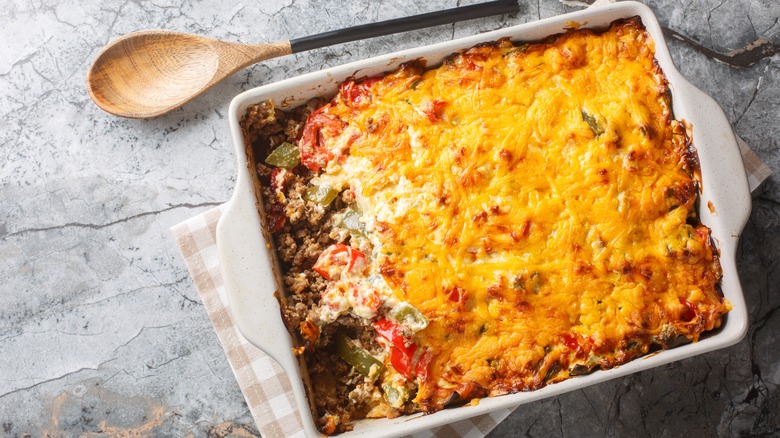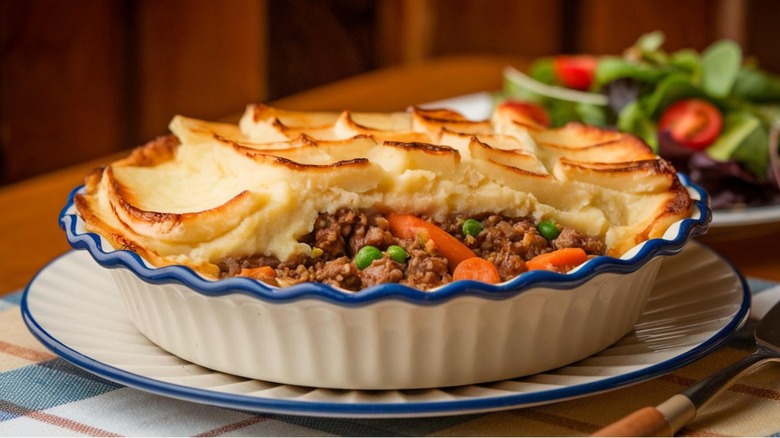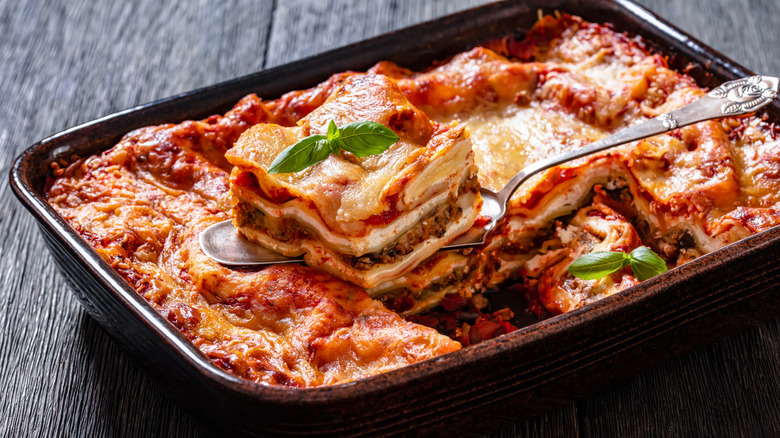Is It Better To Freeze Casseroles Cooked Or Uncooked?
Casseroles are a great comfort food, and they make great leftovers. The downside is having to do all of that initial prep. It can easily make them feel daunting for a weeknight meal when you've got plenty of other things going on. But could you do all that prep work when you have some time on the weekend, freeze it, and have it ready to whip out and warm through in the middle of the week?
You can freeze most casseroles, but not all of them. The big concern is moisture. When casseroles that contain high moisture ingredients freeze, that liquid will crystalize and will then be released more easily as steam. This is a particular concern with dairy, eggs, and more watery vegetables. All can lead to a bad texture in the final dish, and in the case of dairy, you risk it splitting and becoming grainy. You can get around that with a cheese topped casserole by only adding the cheese when you warm it after freezing. After those considerations, the only thing that matters is whether you cook the casserole before freezing it or not. If it contains raw meat, you should cook it before freezing. If it contains cooked meat or no protein at all, you can freeze it without cooking it first.
When to cook the casserole before freezing it
When it comes to cooking a casserole or not before freezing it, it all comes down to safety concerns around meat. If your casserole has no meat in it, then you're good to go ahead and freeze it however you like. If you want to cook it first, you can, but there's no need to. It might be nicer if it's cooked for the first time when you're ready to eat it, rather than just warmed through. If you're including meat in your casserole, then freezing it becomes a different conversation.
When you do the prep work for your casserole, you might have your meat out of the fridge for a while. In some cases, you might even being browning the outside of cubed beef. All of this will bring the meat up to a temperature where bacteria growth can be a concern, but not fully cooking it enough to make sure it is safe. The U.S. Department of Agriculture (USDA) recommends that meat that has been out of the fridge in such a way not be frozen afterwards without being fully cooked first. So, if you have meat in your casserole that isn't fully cooked, you'll need to bake your casserole before you freeze it. However, if the meat is fully cooked, you should still be good to freeze it without baking the casserole. For example, if you are adding Ragu to your lasagna, the beef there is fully cooked before you assemble the dish, so it can go in the freezer and be baked later.
How to freeze and warm your casserole
Once you have your casserole fully prepped and ready to go in the oven, take a beat and then you're ready to freeze it. Let it cool to room temperature (or close enough). If you don't mind losing your casserole dish until you get around to eating your casserole, you can freeze it right in the dish. Otherwise, consider a disposable baking tin or line a dish with foil before you put the casserole in and remove it as a pre-wrapped block once it's frozen. The most important thing is to make sure that you can seal it, either with a lid or with tightly crimped foil and plastic wrap to ensure that there's no air getting in and out. This helps to prevent freezer burn, or at least slows the process.
Your casserole can keep in the freezer for 3 to 6 months before the flavors start to deteriorate. When you're ready to cook and eat your casserole at last, you'll still need to plan ahead a little bit. You'll want to pull your frozen casserole out of the freezer and put it in the fridge the night before to let it thaw. You can cook some casseroles from frozen, but the results can be less than ideal and you'll need to make sure you check multiple spots with a thermometer to ensure it's all cooked through evenly. If you cooked the casserole before, you just need to put it in the over on a low temperature until it is fully warmed through. If you haven't baked the casserole, then simply follow the recipe's original instructions for cooking it in the oven.


